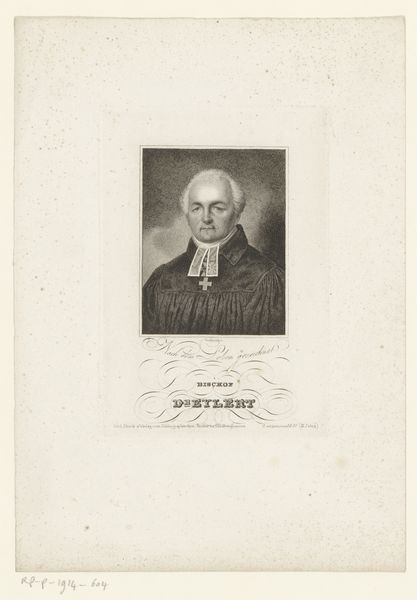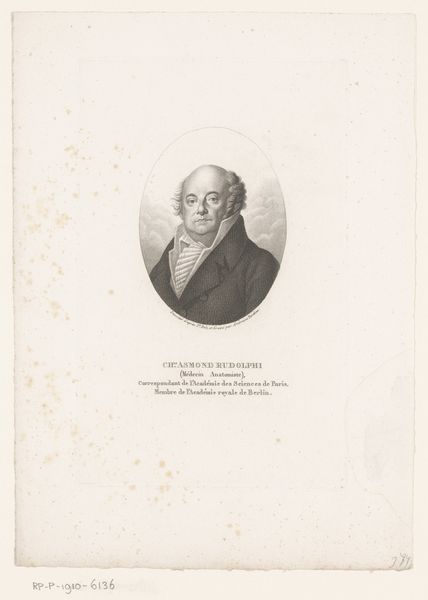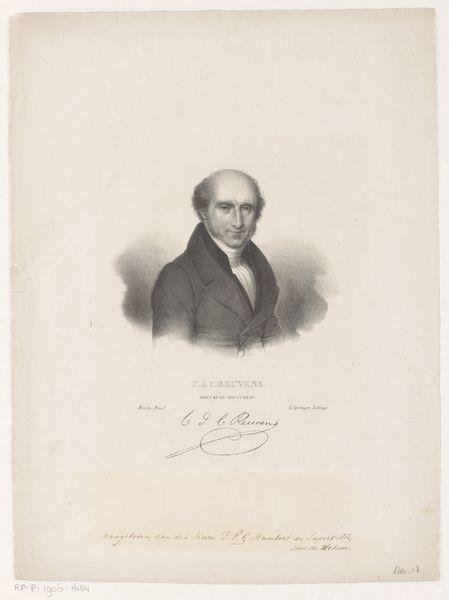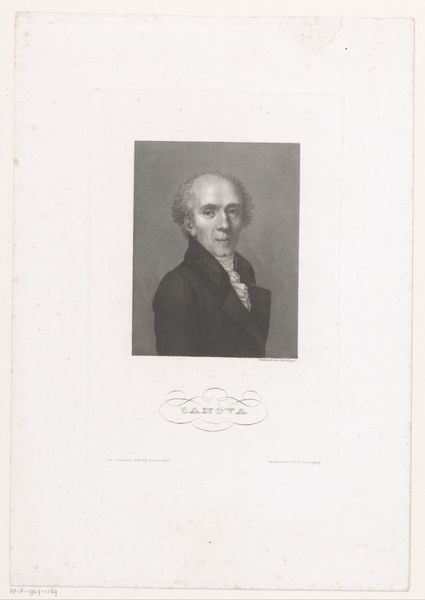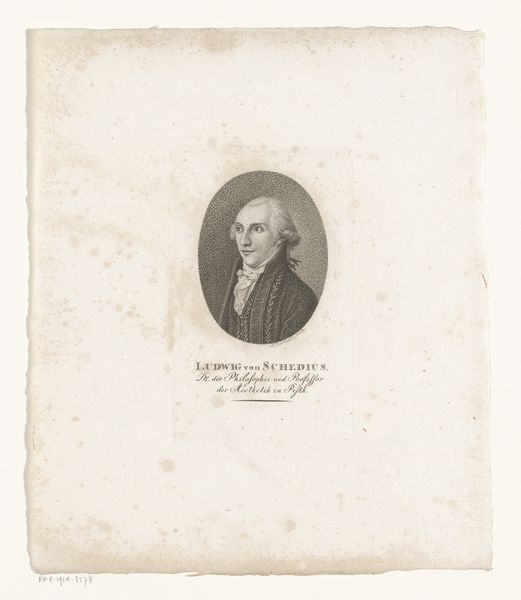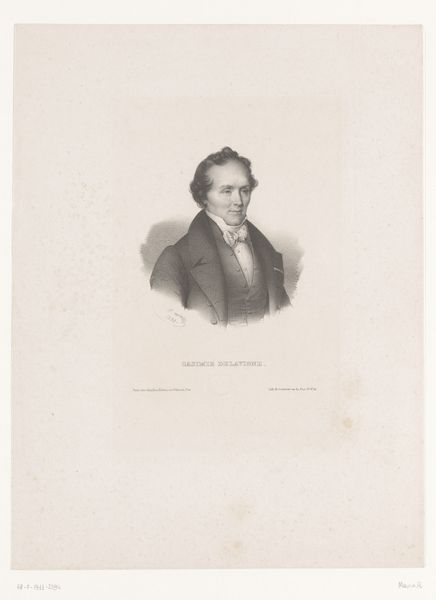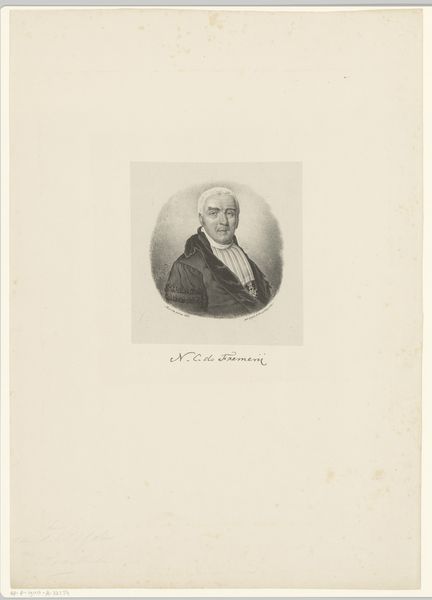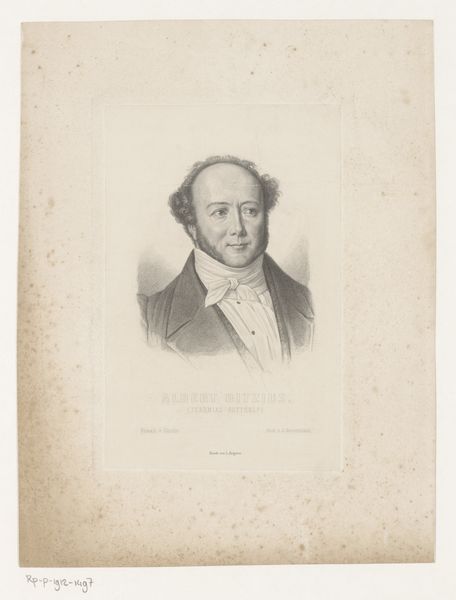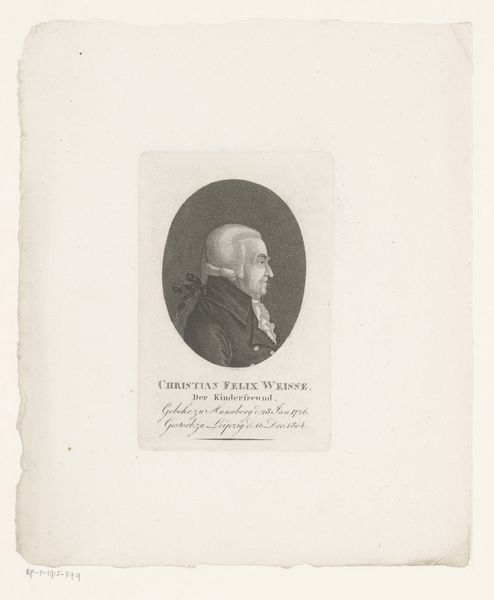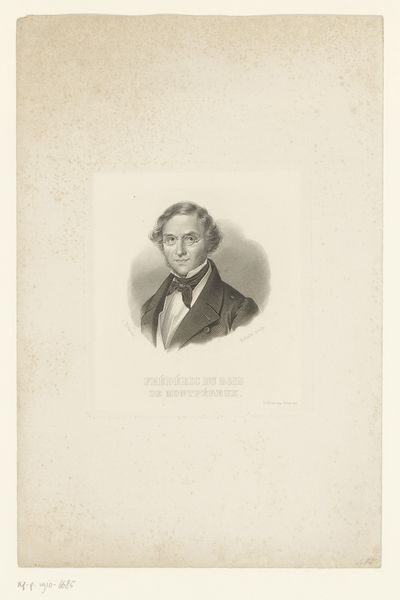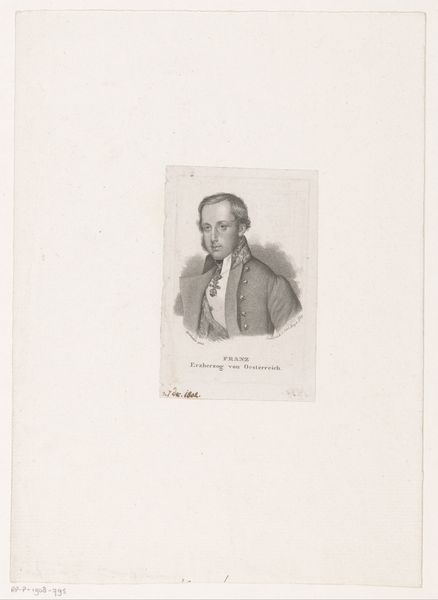
print, engraving
#
portrait
#
pencil drawn
# print
#
old engraving style
#
romanticism
#
engraving
#
realism
Dimensions: height 247 mm, width 158 mm
Copyright: Rijks Museum: Open Domain
Curator: Here we have Carl August Schwerdgeburth's "Portret van Oskar von Wydenbrugk," an engraving made sometime between 1840 and 1855. Editor: The first thing that strikes me is how precise and clean it looks. It's quite striking as an early example of mass-produced imagery, focusing our attention on the man himself. Curator: Absolutely. Engravings like these were crucial for disseminating images and ideals, especially in an era grappling with identity and nationhood. Consider the sitter’s direct gaze and somewhat stoic expression. These were symbols of burgeoning bourgeois power and intellect. Editor: Which are all cleverly achieved via the repetitive actions involved in intaglio printing. I’m interested in how the labor intensiveness impacts the symbolic value—it’s a portrait created through careful, crafted lines. Think about the engraver, meticulously carving the image, ensuring the transfer to many prints. It blurs lines between art and industry. Curator: Good point. The medium amplifies its message. Also consider the clothing—simple but elegant. It speaks to the Romantic ideals mixed with emerging realism in portraying social figures. It suggests stability, responsibility and a subtle nod toward cultivated taste and professional identity. Editor: But how can we overlook how a print also makes art accessible? Replicating a subject into many. Curator: Exactly! This engraving does so much simultaneously. It embodies its time culturally and psychologically, demonstrating Romanticism seeping into a rapidly modernizing world. The very act of creating and sharing a portrait was evolving into a common visual experience. Editor: Thinking materially really shows the social implications behind replicating the image through printing. Curator: Yes, by digging deeper we realize portraits of nobility became almost commonplace, transforming status representation for many through printing. It really encapsulates transformation in societal structure, and its representation through imagery.
Comments
No comments
Be the first to comment and join the conversation on the ultimate creative platform.
